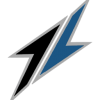Leaderboard
Popular Content
Showing content with the highest reputation since 01/31/2010 in all areas
-

New Members, Please Read!
Morrigan333 and 14 others reacted to CA3LE for a topic
First, if you don't plan on adding value to conversation... leave. Simple posts saying "hi" that contain no true value to the forum may be seen as spam and removed. Tell us something worth typing... share your speed, share your experience or tell me what you think of what I've built. As long as you're a real person posting real content you have nothing to worry about. Bots on the other hand don't last long here. We'd love to have you introduce yourself as a new member, so please click here to make a post to the New Members board that you're currently in. That way we can all give you a warm welcome and answer any questions you may have. But please, if you have a question about your system, connection or any computer related question please make those posts in the board that suits the topic best. If you don't know where your topic should go just post it to General Discussion and one of us will point the topic in the right direction for ya. To see a list of the boards you should make your posts to all you need to do is go to the Forum Default Page. Make sure you take note of the sub-forums that are with-in some of the forums. These sub-forums can sometimes give you more specific help. HAVE FUN DAMN IT! Most importantly... enjoy yourself here, this community is full of not only helpful self proclaimed (and proud of it) computer nerds it's also full of people having a great time! Many people become addicted to our forums so I'd just like to warn you... you may be with us till the day you die, but at least you'll make a ton of really kick ass friends along the way. - Damon15 points -

Why Do My Results Differ From Speedtest.net / Ookla Speed Tests?
Jose Francisco and 7 others reacted to CA3LE for a topic
The most common question that people ask us is why their results here differ from speedtest.net. I want to explain something that may help you understand why this is. According to the Ookla Wiki [updated link] the following is true about your tests taken at speedtest.net... The fastest 10% and slowest 30% of your results are DISCARDED The remaining data is averaged together to determine the final result Throwing away the fastest 10% and slowest 30% of the results in my opinion does not make for an accurate test. Isn't THAT the data that you're here to see? Also note this isn't only true for speedtest.net. Ookla is huge, most of the speed tests online run their software. Source: wiki.ookla.com Multithreading makes your connection look better Ookla speed tests are also multithreaded. Meaning that they open more than one connection to the host and combine the speeds. This often can mask congestion issues. For instance, imagine that you have a pipe along your route that's limiting you to 10 Mbps. If you open more than one connection through that pipe you'll be able to achieve a faster speed... but testing that way will not clue you in that there is actually a problem along the route. Remember, you shouldn't have to multithread your connection to pull your full speed. Multithreaded speed tests, like the majority out there, are designed to benefit the Internet provider not the consumer. They often display your maximum throughput not your throughput over the course of an entire upload or download. Omitting the worst portion of your test resulting in inflated scores that may make you feel warm and fuzzy but aren't going to help you see and resolve connection issues. Multithreading can show that you're able to max out your connection by combining the speed of concurrent connections but a great connection can max out without having to multithread. So, if you have to multithread your connection to get your full speed, you should be asking why that is. With TestMy.net it's instantly apparent if there is a congested route. Your speed here reflects the actual loading time of data within your browser... not the combined efforts of multiple threads being altered (dropping the top 10% and bottom 30% of the results) and added together, all through a plugin that isn't suited for the task. :: EDIT :: If you'd like to multithread with TMN, I offer that as well. Try the multithread speed test. TMN's multithread test gives you the option to select from an array of servers. Allowing you to test across multiple routes, to more than one server at a time. TestMy.net is the only Internet speed test with this ability. So THAT'S why your results differ. -- TestMy.net is a harder test to ace and a lot less forgiving than other speed tests. But isn't that what a benchmark should be? :: EDIT :: Another thing to consider is if you're running windows, particularly if it's older than Windows 7 you may need to tune your TCP stack to see your full speeds. Windows doesn't always come out of the box optimized for fast connections. Flash based speed tests fail to detect this problem. To make this change for free I recommend TCP Optimizer. This makes changing those settings very easy and nearly fool proof. Just open it, slide the bar over to your speed that you're supposed to have, check "modify all adapters" ...apply the settings and reboot. You should have faster speeds after your re-test if that was the problem. Here's an outside source talking about exactly this issue, I'll hunt down more examples. >> Download Speed Test - Something fishy? A few related topics :: Accuracy.. Slow upload, drastically different from other speed tests Resuts Vs. Actual Download speeds? TestMy.net shows different results than other speed tests TestMy v Ookla Difference Between Speed Test Sites? Satellite Service Testing Locking at around 14Mbps Questioning speedtest.net resolved with TestMy.net Outside Sources :: Internet providers caught inflating speed test results [myce.com] Use Testmy.net or else!! NO MORE speedtest.net posts will be allowed!!! by the Admin on [xplornetsucks.com] Accurate Speeds Or Speed Test Error? on [wildblueworld.com]8 points -
My beta gives anyone the ability to run TMN on any computer they'd like. Run it locally on a Docker images I've prepared for you or install it on any web sever, with or without SSL. It only takes 2 files, a total of 1800 bytes of code on your end. What speed will you see between two wired 1 GbE? Exactly what you'd expect to see, watch for yourself. tmn-on-my-server.mp4 The Mac and Windows machines are fairly distant, non-direct routes. The connection traverses 2 switches, then the router, then another switch also adding in about 100 ft of cable before it arrives. Not lab conditions, I wanted all of those real world variables. If you inspect I think you'll agree, TMN's results are pretty exact. tl&dr So average 916 Mbps | 904 Mbps. Adding 6% network overhead you get to 971 Mbps | 958 Mbps. Which is right in line with what we see coming across the interface in reality. I did the same LAN testing when developing the current version (v18) you're using now, always do. But now I'm giving the ability to do it yourself, super quick. ... I've also done that before but not like this. This is very different. Cut and paste a few commands into Terminal or PowerShell and you're running local tests on all your devices in a few seconds. You can also audit all of the code and understand the entire container in just a few seconds. Pretty excited to share that with you all. Curious how people will use it.7 points
-
I have some new tools coming out! And I mean NEW! If you'd like to get an invite when a new Beta is available simply vote on this topic. Currently no ETA but development is moving quickly. I'd like people who are willing to provide feedback but it's not necessary. Just running the program will give me a lot of useful information.6 points
-
I have A LOT of upcoming releases, many of which are going to be built around a new concept. Because there is so much core programming being changed I'm going to do something I've never done. I normally work on the site live and things are released as I write them... if your in the right place at the right time and you pay enough attention you can see me building sometimes. Well, I really feel that the version I have out right now is INCREDIBLY stable... I don't want to disturb any testing or use of the site. So I'm going to offer a beta program for those who wish to join. To join, vote Yes on the poll above. I'll add you to a special member group and you'll be emailed with updates. You'll also have an option in your menu that will allow you to switch between beta and release. Smaller updates will be globally available but the major ones will be held back for the beta testers to play with first. This will help find bugs before public release. When I'm satisfied with the code I'll offer an option for a while to the general public to turn on the beta... after general public beta testing I'll then release it to the final. We'll then start the whole process again for another round. This is going to be really hard for me to do, I really hate to hold new stuff back. But maybe doing it this way will help me spend less time on bug checking and more time of actually building. I'm one person. Your help with this is appreciated. Everyone who has ever submitted a comment... you've already helped build this site. I started with a vison but you guys expanded it. If I'm going to keep bringing those ideas to paper I really need your help. I have at least a couple thousand hours of programming planned just for the next 3-6 months. I need to use my time effectively, spending hundreds of hours searching for bugs is not using my time wisely. Register (If you haven't already), vote yes above and I'll email you later when I have more information. Then, you can tell your friends that you helped build this site. Thanks -D6 points
-
Over the decades I've always strived to have the fastest servers I can afford to host TestMy.net. My journey with hosting has taken me into a colocated datacenter where I pay for cabinet space, power & internet connection and bring in my own equipment. When I first started using colo I built everything out with brand new, current generation servers and networking gear. Over the years I added servers and built up a High Availability Proxmox cluster. Adding servers I found that eBay was definitely my friend. Now I could afford servers that only a few years earlier often went for nearly 10X what I was able to get them for "off lease". Each time I added a new server, it was more powerful than the previous. Over this time I'm adding more resources, things are getting faster. Even my first servers were full solid state, employing arrays of 4 Samsung 850 Pro SSDs. But things really started flying with the advent of Optane storage. A game changer... really, it was too good. (and now it's gone.) Fast forward to 2024. I get a generous donation of servers, the person doesn't care what I do with them, they're just happy to give them to me. They're newer than my servers, 2nd version into the next generation of CPU. So quite a bit newer. I get one of them setup with the same Optane storage I run in my current master server and start benchmarking. It's not really faster and doesn't justify switching servers. Sometimes it was slower. I assume because my servers are higher clock speed, highest end of the CPU SKU. Scratching my head, I really thought being so much newer I'd get a much better result. I take the storage out and pop it in a gaming rig... another machine recently donated to me by a friend. This PC happens to have hardware from the same year as the server I just tested. I run the same tests and had to do a double take. Not only was it faster on the gaming rig, it was WAY faster. This made me reimagine my server topology. Maybe it was time to build with consumer hardware. Here I had a setup that was a fraction of the cost that was out performing in real world scenarios. The better single thread performance and higher clock speed, faster memory... it all makes sense. There's more competition in the consumer market, things cost less. So I sold those servers to someone who can better utilize their resources. Extremely nice servers but for my use case here, they had too much of everything. As soon as they were sold I ordered parts for my next build. Promptly put it together and got to testing. Minimum, 2.5x faster at everything. Average is 3x faster and in some cases I've seen over 6x faster. It has completely blown me away. What is the magical setup? Nothing much really, minus storage I think it cost my about $900, including a piKVM setup to remotely control the machine. Much less than any of my used enterprise servers cost me. Here's my build. AMD Ryzen 7 9700X 8-Core, 16-Thread Unlocked Desktop Processor G.SKILL Ripjaws S5 Series (Intel XMP 3.0) DDR5 RAM 64GB (2x32GB) 5600MT/s CL28-34-34-89 Optane 905p (zpool) and Samsung 960 Pro (OS) ASUS Prime B650-PLUS WiFi ID-COOLING IS-40-XT Black - 47mm Height Low Profile CPU Cooler EVGA 750 BP, 80+ Bronze 750W PSU Rosewill 2U Server Chassis RSV-Z2900U BTF-LIGHTING WS2812B 2PCs 19in Individually Addressable 2GB Raspberry pi4 Geekworm KVM-A8 (kit for building a piKVM) 10G network card It's only a 65 watt TDP CPU! very easy to cool in a constrained (or SFF) build like this. A single half dollar sized CPU out performs all of my dual Xeon systems. Yes, I can't run a terabyte of RAM with this setup but I don't need to. My current systems are 128GB, I figure I only really really need 64GB with this CPU backing the system. Especially in single thread performance the new Ryzen system blows all my other systems away. This type of gain will be felt everywhere, especially in mysql queries and responsiveness. It still excels in multithread and even has a larger cache than my Xeons. It really wins for me on every level. And yes, RGB was a requirement. I never put RGB in a computer, not really my thing. But I figure this is a gaming PC at its core so for $13, why not. I can control them in linux but it adds a bunch of unnecessary packages, I like my base PVE to be as simple as possible. So default rainbow it is. lambo-2025-lq2.mp4 I haven't been necessarily doing it wrong all these years. Without the low TDP and high performance of the 9700X this build would be more challenging. These are recent developments. There's basically zero redundancy in this server. So, it also helps having a PVE cluster that has a bunch of reliable machines, to back up this consumer grade hardware. I can't wait to bring Lambo into production!5 points
-
Well said. TestMy.net started in 2001... but my first internet speed test became popular in 1996, on accident. Was pretty crazy trying to run it early on, not knowing anything. No real tools to even learn online yet either. I hope one day more people find TestMy.net again. I'll just keep building.5 points
-
Different download speed in Laptop and PC
Libby the Kid and 4 others reacted to JereSalo for a topic
Hi! Thank you both for your help. I solved this issue 2 days ago, I had a problem in my Windows 10 desktop and I investigated it for a few days till I found this: https://stackoverflow.com/questions/10694244/sending-data-from-windows-is-slow-over-any-network-with-high-latency-but-linux-i I wrote this on my CMD: netsh interface tcp set global autotuninglevel=normal And it worked! Now if I run the test on my desktop pc I have more than 30Mbps and before I had 3. I don't know why Windows was configured in that way. Have a nice day and thank you for your time!5 points -
Connection is:: 5801 Kbps about 5.8 Mbps (tested with 12160 KB) Download Speed is:: 708 KB/s Tested From:: http://www.testmy.net/ Bottom Line:: 104 times faster than 56K you can download 1MB in 1.45 second(s) https://testmy.net/cgi-bin/get.cgi?Test_ID=HA7PXKR5N I have Roadrunner Premium rated at 6mb down and 512kb up , I pay $60 a month , Anyone that has faster and pays cheaper????????5 points
-
I was supposed to have ping included in the last version but I didn't get to it. I'm hoping to put that up front and center in the next release. Keep visiting to watch it develop before your eyes. --- I'm far from finished.5 points
-
Hi all, I just wanted to put my two cents in here for what it's worth. First of all, I have no interest in any online speed test. I host mirrors for the two most popular speed test sites, one of which you are on right now. My only interest is in helping people get accurate and informed information when it comes to measuring their internet speed. I will probably upset some people with this post, but what I am saying comes from my 12+ years of experience in tweaking web servers and meticulously measuring the details of different transports. For http (e.g. "internet" or web-browser compatible) speed testing, I can say with 100% certainty that you will not find a testing methodology more accurate than testmy.net. The attention to detail and every little tidbit of information involved in http/tcp transport is second to none. I can say that since I host a mirror on here and can measure the results from both ends. For example, if you make a request on my box, apache keeps a log of the transfer information and precisely how long the socket was open and how much information (exactly) was transferred. The timing is accurate to less than 1/10000 of a second. Therefore, I can measure the precise time it took to transfer, say 100MB from my box to your computer and determine from that the speed in which the transfer took place. TMN goes a bit further than most, in that you can see the actual speeds during the xfer as it fluctuates. The other speed test engines take an average of your speed over the duration of xfer and throw away a significant amount of the data as "erroneous." My question is, if it is erroneous yet contributes to the overall time it takes to transfer a file, it is NOT erroneous and should NOT be discarded as such. This is where you will see significant differences on the "other" sites. Sometimes it is disappointing to see the real numbers your machine is capable of. Believe me, I know. I get upset when I think a measurement is wrong. But, it gives me valuable insight into how to increase the throughput and achieve better results. Take a look at my max and averages These come from my VNC (e.g. linux remote desktop) connections to one of my boxes using Firefox or other browsers to test the box. The average has been skewed by testing all kinds of different settings (e.g. jumbo frames, different MTUs, browsers, servers, etc) and so could be much higher if I dedicated an account singly to testing with my best settings...but that would kind of defeat the purpose, in my opinion! If you consider the overhead on the processor and network interface just to support my 1920x1080 VNC connection, then factor in that I am remoting into a server to test it's connection; furthermore that it is just a TCP link with limited threads that can be opened (due to the nature of the protocol), my box is capable of much more. But when it comes to true INTERNET ability, I have never measured anything faster than I can through testmy.net. Consider that the "other" sites use Flash and other visual enhancements, a limited amount of data and basically, nondiscriminatly discards data assumed to be erroneous, which site do you think will be more accurate? I will soon be starting a blog regarding how to improve you internet connection speed and will post the link when I publish it. I would like people to try before and after modifying system settings as well as the other speed test sites. I say everyone should try the other sites as well and see where the discrepancy lies. But if you are truly looking to improve your performance, in my opinion, you have found the spot (that is, unless you want to write your own code and try to start from scratch what has taken a decade to get where it is...good luck by the way). Anyone with questions, please feel free to ask. Understand, please, that I am often distracted and cannot immediately reply -- but I will reply. Probably your best source of information is in the threads on this site, or directly from Damon. He is very active on his site and generally answers anyones questions or posts fairly rapidly. Thanks for reading and forgive my spelling and/or rambling! Good luck! SIETEC5 points
-
4 points
-
Instructions to Enable the Beta are in the Private area. The beta is private but members with access are allowed to share instructions. Please use this public forum for all threads related to Beta 23. If you encounter any issues or bugs please copy the URL in your browser and include it with your post. This helps reproduce the issue. Screen recordings are also very helpful. Start new topic Happy Testing!4 points
-
I hope everyone enjoyed Family, football and food. Peace4 points
-
4 points
-
Hi all, just passing along my experience - your mileage may vary. I think its worth submitting since I was able to double both my UP and DOWN test speeds with these small changes. These observations were made with an ASUS AC-3100 Router, from a hardwired 8p 24 gig (mem) server with a 1 gig Ethernet card. Firewall off I understand this is religious, but I set the devices to protect themselves as best I can. After all, I had no firewall rules in place anyway. So the firewall was just kind of a big piece of code in the router that had to do work on the packets - slowing the router down significantly. IMO that protection can be done elsewhere for much less expense in speed. Again, broad stroke firewall (even with no rules set) does protect against certain attacks - so turning it of is a choice I gamble on since I'm not the department of defense and nobody is trying to prove anything by screwing me over. AND, my server firewall does the same stuff regarding DoS attacks and what not. ( all these fear factors we live with ) NAT Acceleration (cut through) on NAT is a confusing thing to investigate. Devices, L3 switches, routers all have settings. I'm still reading about it. However for today, I can tell you that NAT acceleration ON allows a bunch of stuff to bypass the processor in the router and it makes a HUGE difference in Download speed. Turning it on or off did not make any difference in Upload speed. DNS Settings Talking about DNS settings arrives at a discussion of DHCP settings. That is because DHCP does you the kind favor of loading up the address of it's favorite DNS values when you do not tell it otherwise. This is the setting that allowed me to get from about 5Mbps Upload to 20Mbps Upload instantly. I was initially using the ISPs DNS server, and had my router set to allow DHCP pass through so my devices were becoming contaminated with the ISPs DNS address. This is a tricky topic but it makes a big difference. Consult your manuals carefully. Bottom line, do what is needed to get a good DNS server working for you. --john4 points
-
Hey all. Just wanted to say a big thank you to the creators and maintainers of testmy.net. I live in Jamaica and we don't have fast or quality internet service here unless you live in the more populated areas. Where I live there are no physical internet connections available so I've had to use fixed wireless options for years. I've been through every single one that's been available and your speed test has helped keep my sanity. Basically all of them have tried to send me to the sites that make them shine and make me look like the crazy unreasonable customer. My current provider just upgraded my package after almost 15 years and wanted me to do daily speed tests to make sure everything was fine. They told me to use openspeedtest.com and I told them I would use testmy.net instead (been using you for years and loving it, THANK YOU again) but they said they wanted to measure jitter as well so I relented. Well, after a while I noticed the connection was acting up and while testmy.net gave me the real world, openspeedtest.com was giving results saying I had full speed and nothing was wrong. To cut a long story short, after 2 months of telling them something was wrong and trying to convince them to use testmy.net instead, they have finally relented and admitted there's a problem on their network. So thank you again to each and every one of you who has and anything to do with this site. Please continue to do what you do and fight for the little guy. Much appreciated.4 points
-
Different download speed in Laptop and PC
JereSalo and 3 others reacted to 28mufields for a topic
Thank you JereSalo! this works for me too. only one of my PC has a slow speed, I been looking for the reason for few month, but you solved my issue!4 points -
Wow... look at this test result. I pay for 400 Down and my Avg Down is around 448. I snuck one by their speed throttle mechanism. At least now I know my neighborhood and facility wiring etc. can handle 1 gig. How this happened I don't know, but here is my theory. Based on the last thing I did, which was manipulating my so called router to grab it's Ip address from the host's DHCP but ignore everything else that comes from the Host's DHCP -- my router finally picked up DNS from 1.1.1.1 I proved my so called router was using the new DNS server via the cool tool on this site (DNS lookup or something similar, under Misc --> tools). So, the very first time I ran the test without the extra DHCP baggage - my Down test hit 1 gig+, but their clever infrastructure caught on real fast. At first it over-corrected, then settled down in at the speed I usually get in my test results. So, no, benchmarking is not my hobby. I just want to be well prepared for my inevitable conversation with my dear old ISP.4 points
-
4 points
-
I was once a Hughesnet customer and had the same problems from time to time. It is shared bandwidth; therefore, the more devices added, the less bandwidth you receive. It's a normal practice for Hughesnet to "oversell" available bandwidth. I've also known quite a few people with the service and they all report the same problems. Once their 30 day trial period ends and their contracts are locked in, the service they receive after that point is poor to say the least. It's as if they give new customers "PRIORITY" access until the trial ends, and then, BAM, customers find out exactly what they're paying for. You are not alone! There are thousands upon thousands of complaints filed against Hughesnet for their business practices.4 points
-
Distance issues?
deborah carson and 3 others reacted to fey42 for a topic
Your problem might not be your local ISP. Since they have to connect across the country you are at the mercy of every connection made and every node you pass through. They have control over everything until they hand it off to the Internet backbone and then all bets are off, It can go anywhere. I live 70 miles south of Portland, but to get to the Portland Netfix server, I go though Seattle and sometimes San Jose. Also you have time of day that affects speed. Imagine as everyone comes home, has supper and kicks back to stream their favorite show. It starts first on the East Coast and the load picks up as you move West. 7PM is the worst, the whole country is streaming and unless the server is in your back yard you are in trouble. Try your test against multiple test sites and time of day. You will see a wide variance the further away you are from "home" and the time of day.4 points -
No problem, glad to help. Thank you too. I sell advertising but try to not over do it. Huge segments of TMN's traffic never even see an ad. ISPs and other entities have offered to pay for analytics, many times. Instead of just giving them what they want I'm building TMN to do it for me. Instead of sharing the information with only those who pay for it TMN aims to share all of its collected information with everyone, for free. (within the privacy policy guidelines of course) -- with help from those requests the information presented here will become more and more detailed in future versions.4 points
-
SIETEC's quick, short & simple tips
shark91962 and 3 others reacted to sietec for a topic
I will preface this post by saying that I am a Windows dummy, so I don't have a whole lot to offer to the Microsoft bunch out there. However, my quick little tips don't apply so much to a particular OS as to general system settings good for almost any OS, so here goes: 1. Minimize the amount of running services on your system. I cannot overstress the importance of this one -- the more services & applications you have running simultaneously on your box, the more overhead utilized. So many people have all kinds of virus scanners, supposed "speed up" apps, unnecessary running services/daemons/etc. which do not need to be running 24/7. For instance, say you have a virus scanning platform. **Please note, I am not advocating that you turn off your virus protection -- and only you can determine the level of protection you need, so in the end, use your own judgement and don't hold me responsible (please) ** Anyway, virus scanners are generally not needed constantly. You're not going to get a virus if you don't have one already and you are not downloading files, visiting malicious sites or running untrusted software. There are times the preceding statement if false, but rarely enough to cause concern. So, I suggest that you only have your virus software set to scan files on demand - e.g. when you download something or when you are reading emails. Use your browser security settings to help minimize the chance you wonder into an insecure site and always make sure the sites you are using for sensitive information (such as bill payment, purchases, sensitive data, etc) are encrypted with trusted encryption (check the pad lock icon and make sure it is a "https" connection). Using your browser to help with security is a performance sparing method to minimize the processor intensive constant scanning by a virus detection package. If you have a ton of system services running in the system tray of Windows, take a look at which ones you really need and eliminate the others. Same for system startup -- clear out everything that does NOT need to be started upon startup; this will save memory (RAM) and processor usage...which leads to quicker page response and transfer speeds. Advanced users should check actual "services" in Windows and turn off those you don't need. If you're running a linux flavor, I assume you're already pretty versed in modifying your configuration. If not, PM me. e.g. . chkconfig --list to see a list of services or service --status-all to see what's running currently (RH/CentOS/etc.) 2. Change your MTU (max transmission unit) to 9000 if you're on a high speed cable or ethernet link. This allows your network interface to send much larger frames than the standard 1500 value. Basically, this parameter sets how large a single transmission frame may be, minus overhead. So, if your system includes overhead in the setting, set it to less than 9000 so you don't get an error for exceeding 9000 (e.g. set it to 8900 to be safe). Just make sure you do this if you know what you're doing only and if you're sure it is appropriate for your set up. It shouldn't cause any problems, but make sure you know how to get back in there and change it to the previous value in case it breaks your connectivity (which I doubt!) 3. Try different browsers - not only are some browsers actually much better at speed natively, they save on system resource usage as well. My suggestion: firefox or opera. I was never a fan of opera until recently when they made a lot of improvements. Firefox is always a good choice. IE would be my last choice, but many people love it. Chrome is pretty good too but I have noticed some issues with it lately. 4. Stop background file transfer daemons such as online data backup utilities, cloud sync systems (iCloud, etc). If you have things like that running in the background, they obviously will take a lot of your bandwidth away (unless you specifically configure them not to, they will use as much bandwidth as they can get their hands on). So, shut down iCloud from syncing while the system is active and if you use something like Carbonite backup, let it work when you are not using your box (e.g. overnight). 5. If you are using wifi, make sure you have a good signal and make sure you are using the faster encryption settings. You should use 802.11g at a minimum and preferably 802.11n for best connectivity. Most network connections (note I said most) will not realize much (if any) performance gain by going direct ethernet unless the previous 3 suggestions (signal, encryption, protocol) are not followed. If you cannot adjust the first 3 settings, then you probably should connect directly to your router's ethernet connection or to your cable modem/DSL/etc. You can also change the "power" or "energy" saving settings on your wifi box by setting the transmission power to 100% all the time. Search your manufacturers KB or google for "increasing wifi transmission power" or, more generally, "tutorial to speed up wifi" Note that wifi is going to give you a theoretical maximum of 450Mbits per second in the best and hardly ever realized conditions. Generally 300Mbits is as fast as you'll see and if you're not using 802.11n, 54Mbits optimum. These optimal speeds are what the manufacturers tout, but it is nearly impossible to see them. Believe me, wifi can interfere (pardon the pun ) with even a moderate cable speed of 30-40 Mbits/second. Summary: wired is always better, but there are ways to maximize your wifi connection. I will put the last 5 of my first 10 tips online over the next few days ... but, please feel free to reply to this post or PM me if you need help doing these things. I hope some of this helped! SIETEC President & Lead Network Engineer SIETECserverNet :: sietecFASTcom :: sietecMATRIXcom Coming soon, I will be launching a hosting service unlike anything you have ever seen -- take a look at my test results here: My clients will be able to achieve similar, depending on the service chosen, and it is my goal to help them do so. Interested in pre-sales information? Drop me a line at [email protected] and let me know what you are looking for ... deep discounts to the first 25 people! My website is being re done right now, but I basically offer anything most hosting companines offer, just in a virtual box. (which, believe it or not, that is how I achieved most of these results, through one of my virtual machines). You still get to pick how many processors, RAM, type of HD and space on disk, NIC speeds, etc. You can even choose a free virtual appliance that suits what you are doing and launch it on my platform. Or, I can assist you in installing your OS and let you take it from there .. full root/administrator access! Again, if interested, email or PM me!4 points -
Hello!
j7n and 3 others reacted to paroxysmal for a topic
@CA3LE --Thanks for the great speed test site. I was genuinely surprised at the results I got here compared to speakeasy/ookla. My ISP does host an ookla site and does recommend using the java based speed tests. I was having trouble after upgrading my internet package. My old one was 10Mb/768k and I upgraded to 30Mb/3Mb. I had asked the sales/accounts lady if I needed a new cable modem and she said no and I believed her. Well after doing multiple tests on various sites i stumbled upon testmy.net and actually got an accurate result for what my connection really felt like compared to what my ISP said it should be. I contacted tech support and they said that I did need a new cable modem that the upgraded plan required a DOCSIS 3 cable modem and I had a DOCSIS 2 modem and that could/would account for variances in speed vs internet package. I went in and swapped out cable modems free of charge and tests were about the same on ookla/speakeasy but improved by a decent amount on testmy.net. Most importantly it felt quicker and more responsive as my family and I were using it for various things. Thanks again and keep up the good work! Oh and for all you older techies in the crowd that might remember how we used to do speed tests before there were websites for it *grin* ftp blah.soandso.edu get 5mbfile.tar.gz send <1mbfile.tar.gz --paroxysmal4 points -
That would not solve the issue, and would essentially give you a single average number that is better left as a set of numbers for more information regarding routing. There are two speed graphs that I think are most important for an internet connection: a graph of speed tests to an internal server (within the ISPs network) to determine the average and variance during the day/week/year/millennium of your connection to your ISP; and a graph of speed tests to a server outside the ISPs network, to find out how good your ISP is at handling that. Latency tests can also be very useful. You are right in that a single server can be hampered by a single bad network, but it does point to a problem that is not supposed to exist, and will affect many more servers which you want to interact with.4 points
-

How I helped my speed.
Jessica Coffey and 3 others reacted to BillCherryAtl for a topic
Hi Guys I thought I'd post a solution to a problem I had recently - it might help someone else. Last year I was getting 30+ Mbps down with Comcast using their "Boost" option (costs a bit more than regular). Then this year, it dropped to 10Mbps. Of course I complained to Comcast, ran all types of scans, checked my PC with HighjackThis, etc. Nothing. I have a Dell XPS with a mother board capable of handling 24GB of RAM. I had 15GB in it but then took out a 1GB stick to put in a 4GB stick giving me 18GB of RAM. I also have a bootable second hard drive "F" with Win 7 Ultimate but my primary "C" dive has Win 7 Home Premium. The puzzler is the secondary "F" drive was still getting more than 30Mbps down but the primary "C" drive was only getting 10 Mbps. What's up with that? I tried everything until I discovered that Windows 7 Home Premium can only "handle" a maximum 16GB of RAM - Win 7 Ultimate can "handle" 192GB of RAM. When I dropped my RAM back to 16GB my speeds returned to above 30Mbps on the primary C drive. The lesson for me is that if you put more RAM in your machine than your Operating System can handle, you might down grade your speed when you think you're helping.4 points -
Sharing My Average
Jose Fernandes and 2 others reacted to julio1909 for a topic
myaverage?q=91383589954064&type=Comp_ID&var=Month3 points -
Using DNS in Singapore doesn't really help for your latency to the server. Latency is like the time it takes for you to send a message to your friend and for them to respond. In the world of the internet, when you click on something or ask your computer to do something online, it sends a request to another computer far away. Latency is how long it takes for that request to reach the other computer and for you to get an answer back. If it takes a long time, everything online feels slow, like when you're waiting for someone to respond to a text. When you ask your computer to load a website, it sends a message to another computer far away called a server. That server holds the information for the website you want. The message travels through wires, cables, or even space (if it’s using satellites!), and when the server gets it, it sends the website information back to your computer the same way. The time it takes for the message to go to the server and back to your computer is what we call latency. The quicker it travels, the faster things load! You can't improve this unless you're able to take a shorter path to the server. The physical distance creates unavoidable latency... the speed of light is the limiting factor. What the Latency Test is showing you is that servers in Singapore will perform best for you. Amazon is hosted on a CDN (content delivery network) so when you request using that test it pulls from a server closer to you automatically. To improve latency over long distances, here’s how it works: Use servers closer to you: Imagine a game of telephone. The closer the person, the quicker the message gets to you. Using servers that are closer (like a local one instead of one far away) speeds things up. Optimize the route: Think of taking the quickest path home. By using smarter routes (like special internet paths called "content delivery networks"), the message travels faster, just like choosing a shortcut. Use faster connections: Just like a fast car on a highway, using better internet connections helps the message travel quicker, even over long distances!3 points
-
3 points
-

You can't beat my score.
xs1 and 2 others reacted to Paul Haneline for a topic
Mine are so awesome. Can't wait till my sites to come up for 2 to 3 minutes. Who can go lower then my slow speeds? For 2 years of Suddenlink disappointment.3 points -
The first two tests (Ookla and nPerf) run their tests multi-threaded by default, i.e. they typically make around 8 simultaneous connections to the test server to try to saturate the connection. Ookla has a lot of test servers within the ISP networks, so there is a good chance your test traffic is not leaving their network unless you manually choose another server. To get a multithread test here on TestMy, click the "Multithread off" at the top-right to turn it on. Note that multithreaded tests don't realistically show what you would get streaming or downloading, which generally run over a single connection from the server. Google's built-in speed test is a single connection speed test (not multithreaded), but uses the new TCP BBR congestion protocol. The TCP BBR congestion protocol is excellent at handling packet loss up to about 5% before it suffers significant speed loss. As web servers don't have BBR enabled (or installed) by default, most websites use the legacy TCP CUBIC congestion protocol. For this reason, TestMy does not use TCP BBR, apart from the Colorado Springs server at this time. A few major web hosts such as Google and Microsoft and CDNs such as Cloudflare are TCP BBR enabled. As Google's speed test uses Measurement Lab's servers, you can see how your speed compares with the widely used TCP CUBIC congestion protocol that Measurement Lab uses on its own website test: https://speed.measurementlab.net/#/ If the "Retransmission" figure is not zero, there is a some packet loss on your connection. If the speed is close to the 80Mbps what you got on Google, then your ISP may have congestion on its peering with international links as TestMy does not have any test servers in Italy.3 points
-
I opened up TestMy Latency for public testing about 2 weeks ago. Thousands of tests have been performed daily, thank you for the data and insight. It's really helped to button down the program. It wouldn't be able to test the way it does today without you just simply running those early tests and logging that information to my database. Today I was in the shower and thought, "Why not make it able to test anywhere..." --- cut myself shaving because I wanted to get to my computer so fast. So I added an ability that's hidden right now and I would love for you to test it. https://testmy.net/latency?internal=1&fa=1&addr=google.com https://testmy.net/latency?internal=1&fa=1&addr=facebook.com https://testmy.net/latency?internal=1&fa=1&addr=msn.com ... any address you want. It's going to show as "My Network" right now because it's barely built in there. If you query TML like this and it returns a result then you're testing against the host at addr=. From what I've seen it doesn't matter if the host is behind a CDN like cloudflare, it will punch right through that and get the real time to the host. For instance, a website I know is hosted in Australia, who's users have linked to TMN for decades >> forums.whirlpool.net.au I ping that using ICMP ping and I get Damons-5K-iMac:~ CA3LE$ ping forums.whirlpool.net.au PING forums.whirlpool.net.au (104.20.14.233): 56 data bytes 64 bytes from 104.20.14.233: icmp_seq=0 ttl=57 time=9.928 ms 64 bytes from 104.20.14.233: icmp_seq=1 ttl=57 time=9.410 ms 64 bytes from 104.20.14.233: icmp_seq=2 ttl=57 time=9.819 ms 64 bytes from 104.20.14.233: icmp_seq=3 ttl=57 time=9.808 ms 64 bytes from 104.20.14.233: icmp_seq=4 ttl=57 time=11.445 ms 64 bytes from 104.20.14.233: icmp_seq=5 ttl=57 time=9.191 ms 64 bytes from 104.20.14.233: icmp_seq=6 ttl=57 time=9.319 ms 64 bytes from 104.20.14.233: icmp_seq=7 ttl=57 time=9.396 ms 64 bytes from 104.20.14.233: icmp_seq=8 ttl=57 time=9.357 ms ^C --- forums.whirlpool.net.au ping statistics --- 9 packets transmitted, 9 packets received, 0.0% packet loss round-trip min/avg/max/stddev = 9.191/9.741/11.445/0.650 ms Damons-5K-iMac:~ CA3LE$ (I can tell by the 104. address, don't even have to look it up, most likely cloudflare) That's the ping to the cloudflare proxy... not the actual forums.whirlpool.net.au server. but then I run that address with TML and get about 1 second delay. (sorry, can't share this like normal because it's not logging it to the database... again, this is a hidden function and I have to develop it further. There are blocks in the program preventing certain actions when it's outside of the scope it expects to see. Screenshots will have to do.) https://testmy.net/latency?internal=1&fa=1&https=1&addr=forums.whirlpool.net.au I do the same test to domains known to resolve in the US... Oops, I realize now that you need to add the &https=1 if the website is https. However, most will resolve both. https://testmy.net/latency?internal=1&fa=1&https=1&addr=google.com https://testmy.net/latency?internal=1&fa=1&https=1&addr=facebook.com https://testmy.net/latency?internal=1&fa=1&https=1&addr=msn.com by the way, facebook started responding slower on http also, wasn't just https. It's like it switched me to a different location. Actually, sharing does work as long as the address has less than 3 parts to it. "forums.whirlpool.net.au" won't save just because it has 4 parts to the address... I'll fix that. example embedded share https://testmy.net/latency?q=CA3LE&n=100&internal=1&fa=1&addr=testmy.net&stats=1 Help me understand what this can do, I'm figuring it out with you. Please run more tests and let me know what you find.3 points
-
WHY IS HUGHESNET SO HORRIBLE !
matman and 2 others reacted to Mark Rauber for a topic
Sounds familiar. When I signed up there was no mention of data restrictions, tokens, bonus bs, or anything of that sort. I was told usage was unlimited with 25 mbps. Perhaps somewhere in fine small print it exist, but in either case its a sham. A few speed sites I used to use with Suddenlink now all show speeds at or below what I had with dial-up 15 years ago. I'm paying $86 a month which is higher than Suddenlink charged with 30 mbps unlimited. I told the tech on the phone I don't spend hardly any time on the net, so why after 20 days am I out of usable data. He tells me to insure I'm not connected and using data to turn my computer off anytime I'm AFC. Hell, I'd unplug the stupid modem its a lot quicker. Anyway, thanks you guys for your help. I'll stay in touch as the saga continues...lmao!!3 points -
I'm not sure 'What' you will win in the end. But it sure ain't a usable fast connection, referring to the last poster's comments. I too have been on the phone with them many times, to no avail. Every time I see the advertisement come on about guaranteed 25Mbps, it really annoys me. I have recently found better options to try out, (new company's coming out with internet connections). I just don't know how much of a fight they will put up if I haven't served the complete 2yr sentence, oops, I mean automatic contract I'm supposed to be on with them. Even though there was no mention of it when I called to get connected. The way I see it, they are not holding up their end of the contract, then why am I forced to stay with them and unable to use my connection for any of my work? My speeds are all in the old Dial up range. 3 or 4 days after my cycle begins, I'm told I used all my data. I ask "What, pray tell, is using up my 20 Gigs in the first week so fast? No one seems to have an answer for that. I mean, I am unable to do but the very basic of things on this connection. It isn't fast enough for me to use up 20 gigs!3 points
-
As ridiculous as it sounds, most computer components such as the motherboard, PSU and certain expansion cards can survive a full dishwasher cycle. Obviously that's not how I recommend cleaning a PC. The following 8-year old video is an example. The internals were covered in cigarette smoke residue, so he decided to dismantle the components and put them through the dish washer, with the exception of the case, battery and the hard disk. I also enjoy watching videos on old hardware such as restoration videos. I have come ones where such hobbyists put components through a dishwasher cycle to clean extensive debris build-up from being left for 10+ years in storage such as a dusty shed. As long as no moisture remains when the PC is powered up, it should be fine. I generally clean my PC with an air duster, which is basically an aerosol can filled with propellant gas. Here in Ireland, humidity is usually on the high side, e.g. I run a dehumidifier to keep the indoor level below 60%. The only component I may wash is the keyboard. I have a Corsair Cherry Red Mechanical keyboard that I accidentally knocked a glass of cider on. I immediately unplugged it, tried wiping off what I could and let it dry. Once dry, many of the letters were sticking. When I started removing the keys to try cleaning below, I realised the mechanical switches were jamming. With what appeared to be a ruined keyboard that I only purchased a few months before the incident, I figured I'll try giving it a bath as we don't have a dishwasher. I partially filled a wide container with water from our dehumidifier (since it's effectively distilled), soaked the keyboard and pushed each key multiples times to force water through the switches. I left it to dry for about a week. It's fully functional again, all keys work and no sticking or other issue since.3 points
-

Post your speed and how much you pay monthly
Digitalzero and 2 others reacted to djpenn3 for a topic
3 points -
I have the same experience with 4G (cellular LTE) based broadband connections, such as when positioning a directional antenna. When the network is quiet (e.g. early on a weekend morning), there can be a large variation between what SpeedTest and TestMy reports if the antenna is not aimed correctly. Once the antenna is carefully aimed, the TestMy results climb up towards what Speedtest reports. It's similar also if there are swaying branches in line of sight as Speedtest will again ignore the brief dips as if the bandwidth is sustained. If Speedtest measured road trip speeds, their speed test methodology would eliminate traffic lights, construction zones, slow vehicles, busy junctions and everything else that accounted for the slowest 30% of the journey. If TestMy measured road trips, it would run a stopwatch from the moment of departure to the moment of arrival. Of course like the Speedtest fanatics, there would be those that would argue the same for road trip measurements - "What if that construction zone was not there, those traffic lights were green, no accident on the route, ..."3 points
-
3 points
-

Time Warner is no help
ukulelebug and 2 others reacted to coknuck for a topic
TWC is famous for overloading their nodes. I'll bet your speed loss is in peak times 7pm to 12 midnight. Caused by overloaded nodes with people streaming netflix's and other stuff like that. Like Pgoodwin1 said keep chipping at them and keep asking for you $20 discount like I did. They got tired of giving me discounts and finally moved me to another node, now all is good until they overload this one. Then back to the discounts until they move me again or put in a new node. Just my 2 cents.3 points -
Dedicated client with an alert
chinr and 2 others reacted to TucsonTony for a topic
Yes, an email and/or SMS text alert when a user-defined minimum threshold is crossed would be EXTREMELY useful, IMHO.3 points -
Another suggestion would be to get a basic Windows 10 tablet, which range around $80 to $120 or £60 to 80 in the UK. Although they have bare minimal hardware (32GB SSD, 1GB RAM, etc.), they do run the full Windows 10 installation, so you can run most diagnostics as with a full size Windows PC, such as Auto test here without it stopping if the Window is put in the background. Teamviewer also works great for remote desktop access. Most Windows 10 tablets are powered over USB also, so could be kept charged from the router's USB port if it supplies sufficient power. The internal battery also doubles up as a UPS, so a brief power interruption will not knock it out like a mains-only powered PC.3 points
-
Tested a week ago, I was getting >90mb. In the last few days, I was getting between 5 & 25mb. I have been testing with a cabled connection & wireless switched off. Tried some other speedtests tonight, and the were indicating c. 90mb. So I switched my server to the DE server and tried again - and got 90mb! So it appears to me that there is an issue with the GB server. Either that or my host (VirginMedia) doesn't like it.... Anyone else encounter this problem? Update: Actually it appears that at one stage I had changed to "Global multithread" and that was where my results became inconsistent. reset to London now, and it is better - though still slower than my Dusseldorf tests. (I'm In Belfast, Northern Ireland). regards Elkay3 points
-
W 10 just did a major update that took almost as long as the first install. Wish M$ would get their shit together and put out an OS that was finished. I know my next laptop will be a Mac. Tired of having my time wasted fixing M$ fuck ups!! Instead of attracting people they are driving them away!! Rant over!!3 points
-
Fastest Speeds Ever
dilkhush kumar and 2 others reacted to StackinRaxx for a topic
https://testmy.net/stats/?&t=u&d=10232015&x=1&l=25&q=StackinRaxx3 points -
Hi All Souls, Well ladies and gentlemen, it has finally come. Internet speeds faster than your typical cheap 5 port hub, POE devices, and even too fast for some of your laptops with older NIC cards out there. Behold, 300 mbps / 20 mbps - has finally reached into my area. Although, most webservers peak out at 20mb/s, and netflix only allows each device about 5 mbps from what I can see on my network monitoring. Evidence Below: Download: (on a good day I can get 320mbps) Upload: They complimentary increased our speeds because competitors in the area had 100mbps offers and also, I believe Google Fiber is looking to expand into my area ... I'll keep you posted. As for the obvious questions, torrenting (legal) stuff is infact awesome with the correct settings in your torrent client, I manage about 22-30 mb/s download rate in torrents. The upload speed increase also seemed to have increased my ping times by about 10ms in most games, such as League of Legends, DirtyB, Counter Strike, even agar.io At any rate, TWC MAXX is awesome! And after 2mo with no outages, I have nothing but great things to say. It is cable, so I know there are speed variances but a variance from 150mbps-320mbps is pretty nice for $69/mo.. Anyone else out there get there TWC MAXX upgrade? Oh yeah forgot to mention you need the right modem that can handle all the channels....3 points
-
You should always purchase your own modem. Don't buy it from your provider either, don't even let them give you one. Always do your research on the modem, even if you're not going to use it's full capability... in the future you may. Motorola owns. If you get the best model (usually for around $100) and pair it with a great N-600+ or AC router (Netgear owns here IMO) you can't go wrong. So side from saving money why should you always purchase your own? Especially with Comcast... Because Comcast USES their customers who have leased modems. If you have one of Comcast's modem/router combos you're not only broadcasting your own private wifi but also Comcast's public wifi network. People can hop on your modem and draw your bandwidth. They don't access the Internet from your IP but they do draw bandwidth from your modem. You can now call 1-800-XFINITY or visit http://customer.comcast.com/ to disable this "feature". But in my experience, even without that... their modems suck. They're huge and you don't want to combine your router and modem. I change my routers out more often than my modem needs to be changed... More info > Comcast sued by customers for turning routers into public hotspots You can get much better supported routers in the open market that will give you a much richer feature set and technologies behind them. IMHO it's always a dumb move to get modems and routers from your provider. ESPECIALLY if they're a combined unit. YUCK! No thanks. If they gave one to me... I wouldn't even sell it or give it away... I'd disassemble it for fun, see if any parts could be salvaged. Get that public wifi out of people's houses! It's a disgrace and they should be ashamed for doing it without really telling people. Hey Comcast, install that crap out in your pedestals at the street and pay for your own electricity!3 points
-

upgraded my internet finally
Solo Will Aser and 2 others reacted to starship_troopers for a topic
I finally gave in and upgraded my internet from 20mbps/5mbps to 50/10. I am currently streaming some youtube/netflix so my speeds are slightly off and its peak hours anyway. but check it out.3 points -
Sorry, long email... hopefully you read it since I wrote it just for you. Your connection may be faster if you take the time. Hi Ross, Don't be so quick to judge. This isn't my first rodeo. I've been testing bandwidth since 1996... (the name TestMy.net came about in 2001) I've dedicated myself to the subject and I've built TestMy.net myself line by line. It IS the most accurate and compatible in browser speed test available and it's able to detect issues that slow you down that other speed tests fail to notice. Ross, I hear this nearly every day. Stick with me and I'll explain a few things. First of all, I too use Usenet, every day. Giganews to be exact. I also am able to pull faster speeds with Usenet than I get from my TestMy.net results. There are various reasons for this. First, your speed on Usenet doesn't instantly ramp up to full speed. TMN is calculating your speed based on everything that happened from start to finish. ...that doesn't account for your speed being THAT much slower, I know, but keep that in mind. Second, Usenet is multithreading the download. Some providers right now are actually shaping their users bandwidth, limiting single thread transactions. TMN reflects this... Usenet and Torrents will be unaffected because they are threading. There is also TCP stack optimizations that can make a HUGE difference. It looks like you're running windows. This is more often the case with windows and fixing it is as easy as running TCP Optimizer, it's free with no install... it simply optimizes your TCP stack. Upon reboot most people have drastically improved speeds. Thousands of users over the years have emailed me and posted in my forum about the success they have with that. When I ran windows that was the first thing I did on a fresh install. Every time it made a huge difference. Trust me, if your results on TMN are effected, you're effected elsewhere too. If TCP is the issue, you will find relief and feel a difference in how snappy things are afterwords. Just because you can achieve 40 Mbps doesn't mean your optimized for that speed. TestMy.net is VERY good at picking up on TCP issues and provider bandwidth shaping because it's a linear, single thread transaction. It's the ONLY speed test that works the way it does. I also offer a multithread speed test now. I encourage you to try this method, it's brand new and the public is barely starting to even notice that I offer it. Personally.... here, I'll just show you my speed. Without Multithread enabled :::.. Download Speed Test Result Details ..::: Download Connection Speed:: 46403 Kbps or 46.4 Mbps Download Speed Test Size:: 80.8 MB or 82688 kB or 84672512 bytes | Timed:: 14.609 seconds Download Binary File Transfer Speed:: 5800 kB/s or 5.8 MB/s Tested At:: http://TestMy.net Version 13 Validation:: https://testmy.net/db/B0984KF TiP Measurement Summary:: Min 23.65 Mbps | Middle Avg 50.84 Mbps | Max 51.28 Mbps | 44% Variance TiP Data Points:: 24.89 Mbps, 47 Mbps, 51.28 Mbps, 51.19 Mbps, 50.94 Mbps, 51.11 Mbps, 51.19 Mbps, 51.06 Mbps, 50.98 Mbps, 51.28 Mbps, 51.19 Mbps, 51.02 Mbps, 51.15 Mbps, 50.98 Mbps, 50.72 Mbps, 50.81 Mbps, 51.02 Mbps, 51.28 Mbps, 23.65 Mbps More Stats:: https://testmy.net/quickstats/CA3LE https://testmy.net/compID/625710007986 Test Time:: 2013-06-26 08:09:47 Local Time Location:: Phoenix, AZ US >> Destination:: San Jose, CA US 1MB Download in 0.18 Seconds - 1GB Download in ~3 Minutes - 829X faster than 56K This test of exactly 82688 kB took 14.609 seconds to complete Running at 253% of hosts average (Cox Communications https://testmy.net/hoststats/cox_communications) User Agent:: Mozilla/5.0 (Macintosh; Intel Mac OS X 10_8_3) AppleWebKit/537.36 (KHTML, like Gecko) Chrome/27.0.1453.93 Safari/537.36 [!] With Multithread enabled :::.. Download Speed Test Result Details ..::: Download Connection Speed:: 85954 Kbps or 86 Mbps Download Speed Test Size:: 80.7 MB or 82668 kB or 84651996 bytes | Timed:: 7.879 seconds Download Binary File Transfer Speed:: 10744 kB/s or 10.7 MB/s Tested At:: http://TestMy.net Version 13 Validation:: https://testmy.net/db/pGvHWzK Multithread Test Utilizing:: west2.testmy.net More Stats:: https://testmy.net/quickstats/CA3LE https://testmy.net/compID/625710007986 Test Time:: 2013-06-26 08:08:38 Local Time Location:: Phoenix, AZ US >> Destination:: Global Multithread 1MB Download in 0.1 Seconds - 1GB Download in ~2 Minutes - 1535X faster than 56K This test of exactly 82668 kB took 7.879 seconds to complete Running at 474% of hosts average (Cox Communications https://testmy.net/hoststats/cox_communications) User Agent:: Mozilla/5.0 (Macintosh; Intel Mac OS X 10_8_3) AppleWebKit/537.36 (KHTML, like Gecko) Chrome/27.0.1453.93 Safari/537.36 [!] Both are testing from the same server, same amount of information, moments apart but the test is invoked differently. Both results are right... put a meter on the line and you'll see. Some faster connections need to multithread to pull their full speed. Now, if I optimized my TCP stack just right I would probably be able to get those numbers more in line with each other... I leave settings default on my machines because it aids my development. Having the issue myself showed me that I needed a multithread test to give people to compare the classic results to. ... so I recently built and released it. If I always rocked optimal settings myself then I wouldn't be able to test the way the majority of my visitors test. I have optimal setups I test with too, achieving hundreds of Mbps. (commercial connections, not my home connection... I wish!) You can multithread to one or all of my servers... giving you the ability to get a global result from a single test. No other speed test is able to perform this way. Another feature that really sets TMN apart. I also see that you're in Scotland, International routes and distance will drop your speeds as well. I recommend testing off my server in Amsterdam. Compare the results to what you get to my servers in the US (since you probably visit many sites hosted in the US). Again, TCP optimization is important. Because you're adjusting the maximum size of the packets. Imagine it like this. You have a bucket and a thimble. The thimble is what you're working with now... when you increase your MTU you'll be working with a bucket. You don't have to go back and fourth to the well as many times with the bucket. At short distance it's less noticeable but testing all the way across the Atlantic... your speed is going to suffer with that thimble. What also comes into play is that many consumer level international routes can be limited. (this is getting better over the years... it used to be a more widespread problem) Multithreading will raise the speed in that situation as long as the route isn't being limited by congestion. I hope that you find the issue, resolve it and email me back. Like I said, I get this a lot. Nearly everyone emails me back to say, "Sorry... I'm going to tell my friends about TestMy.net now..." -- I hope that in the end you'll see that TMN reports the truth and share my site with your friends. I work day and night to make it better for you. I don't advertise so I rely on my work to speak for itself and let the public decide if it's worth sharing. So far, so good. Cheers, - Damon - TestMy.net P.S. I realized I forgot to give you a link to the Amsterdam server http://eu.testmy.net will default you to Amsterdam, NL. You can also make a selection at https://testmy.net/mirror ... a link to that is at the top of all the pages. See attachement. I recommend the official servers because I control them but if you look under the self hosted tab you'll see a server in Huerth, NRW Germany and London, GB. You might want to try those too. Any mirror listed is capable of at least 100 Mbps, my official servers are all connected with a minimum of 1000 Mbps... my main server in Dallas has dual 1000 Mbps uplinks to the Internet. ... all of my servers are connected through the Softlayer Network which has some of the deepest peering in the industry and a worldwide private network. The cities where I host my servers are chosen based on their website hosting popularity. My site in Texas hosts well over 100,000 servers each of which can have countless websites... that's not to mention all the other hosts in Dallas, that's JUST Softlayer's servers. You're going to connect to the areas where my servers are if you're on the Internet... so those are the areas I have you test to. Other speed tests try to eliminate routing factors to boost your score... I believe those are important variables. You already know the speed you're supposed to get... I'm trying to show you the speed that you REALLY get. Cheers, - D3 points
-

new build done
CA3LE and 2 others reacted to starship_troopers for a topic
well here's my new build. up and running like a beast. i7 3770k thermaltake frio ock cooler master haf x full tower samsung 120gb ssd 1tb data drive Lg bluray drive 8gb ddr3 1600 ram powercolor 7970 850 gold rated corsair psu 23 inch 1080p monitor gigabyte ....im too tired to rememberthe number.... d3h mobo sorry for blurry images. i took them with my phone and my hands arent exactly steady.3 points
































